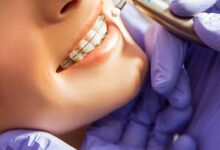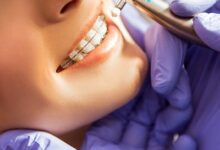
New Dental Imaging Technologies: How do 3D Dental Scanners Work?
Although dental health is critical to everyone’s well-being, the cost may be prohibitive.
Dental care, both medical and aesthetic, can be expensive, both in the examination and treatment phases. Professionals in dentistry use dental imaging technologies to streamline processes and save expenses.
Dental 3D scanners are one of the best tools that dental technology has given the field in quite some time. Keep on reading to learn all about 3D dental scanners and how they work.
Table of Contents
Dental Imaging Technologies: The 3D Dental Scanner Edition
Dental clinics are gradually adopting 3D dental imaging. It’s perfect as the next standard of treatment. Dentists may create a three-dimensional digital model of your teeth and cranium using 3D dental scanning.
An interactive 3D model allows dental practitioners access to previously unreachable areas. As a result of this new viewpoint, professionals are able to better diagnose and treat patients.
Cosmetic and restorative dental procedures, such as dental implants or oral surgery, are the most popular uses. Bone grafts, implants, and root canals may all be planned and customized using 3D imaging. Creating 3D pictures for orthodontic treatment is another common use for 3D scanning.
What Is the Process of 3D Dental Imaging?
Your dentist will use a Cone Beam Computed Tomography (CBCT) imaging system to capture images of your teeth and jaw. By generating a 3D picture of your teeth, this gadget gives dentists a clearer view of your smile.
Dentists can more easily plan therapy and make accurate diagnoses. As a result of 3D imaging, your dentist can view the dimensions of each of your teeth. This includes their height, breadth, and depth.
More and more dentists are turning to CBCT technology instead of traditional x-rays. It provides a more complete view. Your dentist will be able to view your teeth, muscles, nerves, illness, infection, and more. All through the use of an intraoral scanner.
The Benefits of Using 3D Dental Scanner
In terms of efficiency and patient comfort, dental 3D scanners provide the most value.
X-rays are widely used in dentistry. Although, they can only provide 2D pictures of a patient’s teeth and identify trouble regions, not the whole structure. Generally speaking, most dentists use this method, along with a physical check.
Professionals can complete scans from every aspect of the mouth in less than a minute. Also, by using intraoral 3D scanners, dentists can make diagnoses. They can also decide on treatment plans, and measure the size of items like dental implants or dentures.
Quicker Analysis
When it comes to dental experts and laboratory technicians, they aren’t necessarily the same thing. We frequently underestimate the number of individuals involved in medical practices.
The same goes for the importance of communication between the departments. Especially, the departments that diagnose and those who plan therapy.
These divisions can instantly exchange digital dental scans. You can convert an x-ray scan into a file and submit it to the lab with any pertinent remarks. It’s a great way to do so, instead of circulating it around the practice.
You can start the analysis and creation of the prosthesis shortly thereafter. Digitized dental scans make it possible for dental lab staff to communicate in the most effective and rapid manner possible.
Elevating Patients Comfort
Think about the earlier ways of determining the shape of a patient’s teeth. It involved making molds using a silicone-like material, which was fairly intrusive. Dentists applied material to the teeth in the same way that one would apply Silly Putty to a surface to create an outline.
Dental implants and retainers need this intrusive procedure, which is painful yet essential. You can negate this pain by a quick interior examination of the mouth using a portable intraoral 3D scanner. It scans the teeth and creates an exact 3D model of the form of the patient’s teeth.
As well as being more patient-friendly, this procedure is also much quicker and more effective. After all, the form of a person’s teeth varies with age and lifestyle.
You can update a CAD file to meet the new shape before sending it to print. It helps you avoid the need to physically produce a mold of the teeth.
As an extra benefit, since they do not employ the same kind of radiation like x-rays, digital scanners and intraoral scanners are far safer. X-rays, which may raise cancer risk as well as have unpleasant short-term side effects, are a prime example of this.
3D scanners are safer than x-rays. They reduce the danger of side effects including vomiting, hair loss, and numbness. Even if the risks are modest.
Speedy Turnaround
A patient’s mouth may be scanned many times throughout the course of therapy using intraoral scanners. It requires just a short amount of time and a little amount of materials.
Custom braces, retainers, and dentures may be created in one day. This is all thanks to the rapid scanning and 3D printing capabilities of the dentistry industry.
As a result, there is no longer a need for follow-up appointments. And, dentists and patients save money since they don’t have to carry the materials to another location.
In addition to saving time and money for dentists and patients, this speed also means that emergency operations and time-sensitive treatments may be completed swiftly. As a result, patients benefit from faster and more effective recovery since therapies may be administered before their condition worsens.
Higher Efficiency
Larger 3D scanners may be used in conjunction with x-rays to provide a complete depiction of a patient’s jawline for more complex procedures. Facial reconstruction and bone resetting may now be accomplished in much less time than previously. In comparison to a typical x-ray, a dental scan may be completed in about 20 seconds.
Using 3D scanners comparable to an x-ray, these bigger scans are done by rotating around your head and taking photographs continuously, like a video camera.
Patients benefit from fewer physical inspections, practitioners benefit from more accuracy, and lab technicians benefit from greater dependability.
Dental Imaging Done Right
As the quality of care in the dental industry increases, professionals must stay current and deliver the finest service possible. Making the appropriate decision about your practice’s intraoral scanner is a critical first step toward becoming digital.
We hope that our guide has shed some light on what dental imaging technologies have to offer. Next, you’ll want to check out our healthcare section for more information on using new devices.








